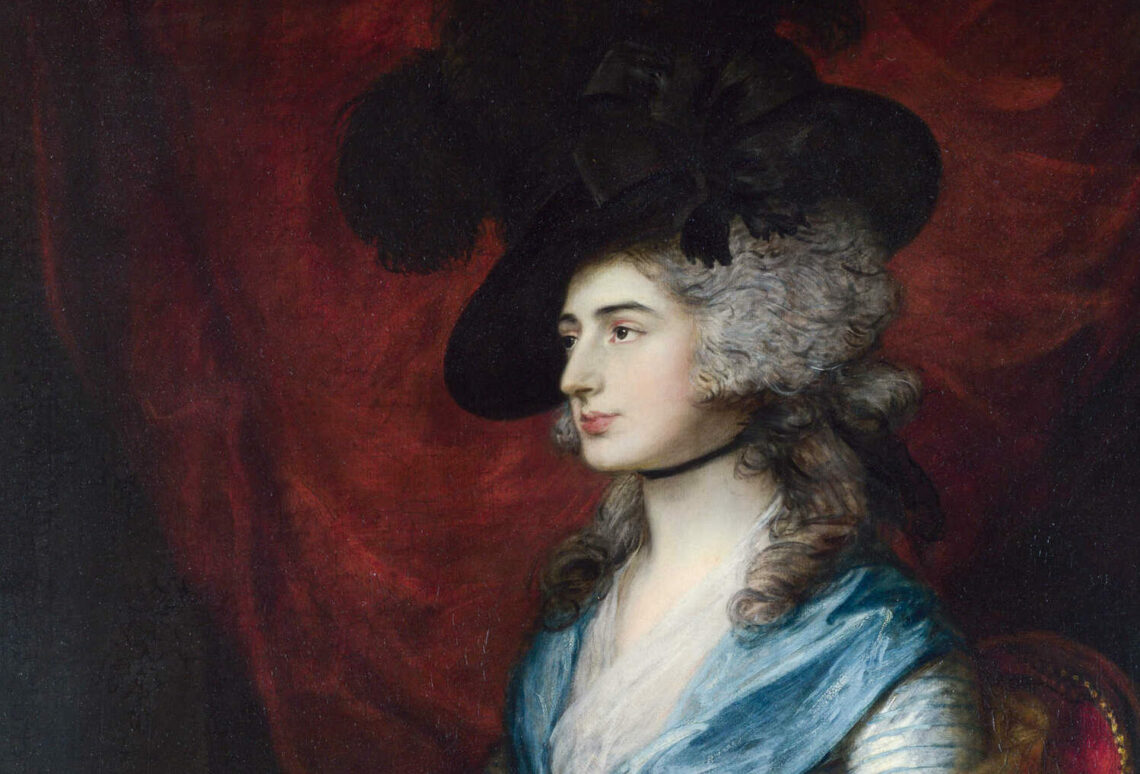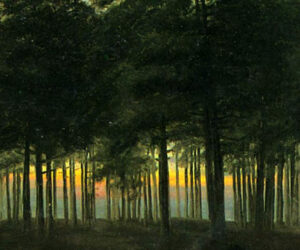
Gettin’ Wiggy With It
1 – Welcome back to #ThreadTalk, your weekly dose of fashion history from yours truly.
Today, we're getting Wiggy With It.
But don't get comfy, yet. The styles might be laughable at first, but wigs are steeped in imperialism & colonialist privilege… like a poison tea. ☠️🫖

2 – We begin in Ancient Egypt (no surprise).
Egyptians were wild about wigs in the early days. And b/c they doused wigs in oils & perfumes, sometimes they stood the test of time.
Nany's here (human hair) was covered in beeswax & animal fat; thusly preserved from 1040–992 B.C.

3 – Ancient Egyptian tombs are a wealth of wig wonders, including headdresses & other ornaments.
Unfortunately, hair is organic. So, just like other human bits (i.e. those harder to embalm), we re-create (this dates from the reign of Thutmose III).

4 – Which begs the first question. Why wigs? We know many Egyptian men & women shaved their heads and wore scented perfume cones that melted with heat in the sun. Religion? Aesthetics? Cooling?
The record has both dark hair & fair hair, too.

5 – In China, hair embellishments grew & changed over the centuries, from minor enhancements to elaborate structures of wire and wood.
In Xin Zhui's tomb, excavators found a wig still pinned to her head–and a spare one in a box, dating from the 2nd BC, Western Han Dynasty.
6 – During the Tang Dynasty, bigger hairstyles required even more coiffures, & not every court woman could summon up the locks naturally.
So, if you had the $$$, you would use whatever you could to get that high shape. Tang court ladies, 706 AD, Qianling Mausoleum.

7 – We'll get to Rome in a moment, because they get really into wigs.
It's at this point I start just really wondering WHERE DID THE HAIR COME FROM? And this, friends, is where this thread gets twisted fast.
Below: Creepy ass bust of a Roman woman w/a "diadem" wig, ca 80 CE.

8 – We know Romans had a lot going on, including major opinions about hair.
For men – Hair on face? Bad. Hair on head? Good.
So what to do if your hair was not happening in the correct order? Well, you make yourself a wig & you plucked/shaved the crap out of your beard.

9 – Women had even more going on, especially nobles. Their elaborate hairstyles rivaled the goddesses, quite literally.
But where'd the hair come from? Well, darker hair came from India, most likely. And the blond stuff? Spoils of war from the Germanic tribes.
Yup.

10 – You *can* make a wig out of anything. Horse hair, yarn, flax, etc. But people with $$, they want the good stuff.
So let's begin with Elizabeth I. She started with wigs after 1562, when smallpox robbed her of her naturally lush red locks. She used it to rebrand herself.

11 – Although wigs were likely in use before that time, her court rose up in support. It became *fashionable* to wear a wig.
Or, well, to have *enhancements." This "Portrait of a Ladyin White", dated 1595-1600, by George Gower gives you a glimpse into such heights of fancy.

12 – But let's be real. Most of us, when we think of Western wigs, think of in this direction.
We have one man's vanity to thank for that & (potentially?) syphilis.
That man, King Louis XIII, started to go bald and, in French style, made it *fashion*. (I had to use this pic)

13 – Before Louis XIII et his son, who also rocked the periwig, outside of Lizzy's court, wigs hadn't caught on much. But now, it kind of went bonkers.
The French (my people!) went to TOWN. And Louis XIV was like, "Papa, hold my biere!"

14 – Samuel Pepys, the English Restoration diarist, had a bit to say about wigs. And plagues.
Seems folks were shaving their heads for hygienic reasons, since they were concerned about spreading disease. Weird, right?
Pepys was on board w/these new wigs, but had some worries.

15 – First, he was a bit concerned that local wig makers were using plague cadavers for their new wigs.
I mean, fair.
Second, he was worried that wearing his new wig out in public might be a vector for spreading disease.
Because he was a considerate person. 👀

16 – From this point on, wigs are big Western business. And it coincides with Colonialism & Imperialism perfectly.
Everyone wigs out Well, poor folks have to wear itchy horse hair wigs. Rich folk use the hair of enslaved people, impoverished people, & anyone they can pay off.

17 – Why grey? Well, some wigs started out white, because white/blond is the rarest (read most expensive) hair. So people started *powdering* brown wigs, which eventually went grayish.
Many women combined their own hair with wigs for a natural hairline. "Natural." Totally.

18 – Again, the French sort of took this to the wildest extreme, especially at Versailles. The 1770s in France truly blow my mind.
But gray was not the only color & not only for women. Men wore periwigs in a variety of hues. Like this pink from British officer Col. Hamilton.

19 – Col. Hamiton died at Waterloo, which reminds me of Waterloo teeth. Waterloo teeth were, well, rich people dentures made from… those left behind.
I'm pretty Waterloo wigs happened. Because people are horrible.
20 – I do wonder if someone took Col. Hamilton's pink wig…
ANYWAY.
Even though George Washington DID have dentures (not wood), he did not wear a wig. He just powdered his hair. Jefferson only wore a wig in France.
(Where have you been?… uh, FRANCE.)

21 – About the powder. Wig (& hair) powder was big business. Just like the Egyptians, you started with some grease. Pomade. Gotta get it sticky.
Then, you administer the dust en masse. Could be flour. Clay. Ash. Usually scented to cover up the ungodly under-stench. See below.

22 – As you probably imagine, this was a SEVERELY messy business. Hence, we have "powder rooms". All those darlings at Versailles would have been worse than a Head & Shoulders commercial with all that dust!
Couldn't ruin a good suit with dust, after all.

23 – Ultimately, powder was the wigs' undoing. When Parliament put a tax on wig powder in 1795, thinking it would bring income to the empire, people simply stopped using it.
Eventually, the long Regency ushered in an age of natural hairstyles… that look Greek & Roman…

24 – Look, I don't pretend to understand. Humans like big hair.
This woman gets it. #teamdolly #teammoderna The higher the hair the closer to whatever power you choose or don't choose.

25 – What SUCKS is that court wigs and barrister wigs are still a symbol of oppression & colonialism.
I did not realize how many countries still use them around the world–MUST LEGALLY use them in some cases.
And those wigs are still hella expensive.
26 – As a sheltered American, I see Parliament videos & giggle because that's just weird to me.
But that's privilege of a different sort.
Wigs mean more than what they seem. They're sacred, they're culture, they're oppression, they're art. It's complex.

27 – So, a few bits of beauty before I sign off. I have a soft spot for the late 1700s, with Joshua Reynolds & Gainsborough's winsome gray-haired ladies.
Reynolds – Mary Darby, Mrs Thomas Robinson 'Perdita' – The wig, the hat, the stare. We would get up to much mischief, 1782.

28 – This is entitled: The daughters of the 2nd Earl Waldegrave: Lady Elizabeth (1760-1816) Lady Charlotte (1761-1808) Lady Anna (1762–1801) – and I do love that it's a triune of sisters.
Their brows, their rosy cheeks, their mountains of hair. 1780, so they are all around 20.

29 – Gainsborough, Georgiana, Duchess of Devonshire, 1783.
I blame Gainsborough for all of this, really. I saw a painting of his when I was in second grade, and it lit my brain on fire.
Georgiana is draped in muslin & silk. Maybe it's a wig. Maybe it isn't.

30 – 1775 was just one of those years. The AUDACITY of this hair. But also her eyes?
Gainsborough, also. Portrait of Miss Elizabeth Linley [later Mrs. Richard Brinsley Sheridan].

31 – 1778 brings Mrs. Dalyrimple, and I love her profile, her hair, everything. The look of sadness on her face, the way she's clutching her gown… it just speaks to me.
Also, orange silk, yes. Peep the shoes. Are we running away? Are we tossing that wig and eloping?

32 – There's much more I didn't get to, but this is Twitter, etc. Lots of sources this week, and much in the scholarly way.
Sources 1
https://en.m.wikipedia.org/wiki/Wig#Ancient_use
https://fashion-history.lovetoknow.com/fashion-history-eras/history-wigs
https://www.battlefields.org/learn/head-tilting-history/rise-and-fall-powdered-wig
https://www.jstor.org/stable/2211360
https://www.jstor.org/stable/25527004?seq=1#metadata_info_tab_contents
33 – Sources 2
https://www.jstor.org/stable/27867791
https://en.wikipedia.org/wiki/Five_Orders_of_Periwigs
https://www.mentalfloss.com/article/31056/why-did-people-wear-powdered-wigs
https://www.bbc.com/news/magazine-33085031
34 – Sources 3
https://www.artsy.net/article/artsy-editorial-curious-victorian-tradition-making-art-human-hair
https://www.atlasobscura.com/articles/intricate-craft-art-human-hair-jewelry-mourning-braid-mutter-museum
https://www.geriwalton.com/hair-powder-history-of-its-popularity-and-unpopularity/
https://www.regencyhistory.net/2016/01/hair-powder-and-pomatum.html
https://www.jstor.org/stable/507324
35 – Sources 4 –
http://nationalclothing.org/asia/39-china/535-chinese-traditional-hairstyles-and-hairpieces-samples-from-tombs.html
https://thisisafrica.me/african-identities/african-judges-wigs-symbol-of-colonialism/
http://grandmotherafrica.com/18995-2/
https://www.reddit.com/r/ArtefactPorn/comments/9s2fym/the_wig_of_nauny_a_21st_dynasty_princess_buried/?st=JNV70NYY&sh=59854c11
https://en.wikipedia.org/wiki/Samuel_Pepys
36 – Sources 5 –
https://en.wikipedia.org/wiki/Xin_Zhui
https://www.pepysdiary.com/encyclopedia/517/
37 – And just a few notes. If you're like, "Why didn't you share a ton of pictures of old wigs, Natania?"
It's because they all look like this, and like, there was already enough nightmare fuel in this #threadtalk.

38 – Also, there is still a horrible black market for human hair. Not much changes, alas. If you're a wig-purchasing person who wants to buy human hair wigs, please do your research.
https://www.smithsonianmag.com/history/secret-history-buying-and-selling-hair-180961080/
39 – Thanks for (re)joining me on #threadtalk tonight!
(Yes, wigs were absolutely used for lice prevention if you shaved your head. But the wigs also still carried lice. And maybe plague. The powder helped a bit.)
Question beauty relentlessly.

40 – Oh, and a few other notes…
Wig powder colors besides white most commonly in violet, blue, pink.
Also pomades used grease which, y'know, went rancid. So that's fun.
Wigs SO EXPENSIVE to make. So easy to ruin.
Here's one more ::runs away::

Originally tweeted by Natania Barron (@NataniaBarron) on August 30, 2021.








One Comment
Pingback: